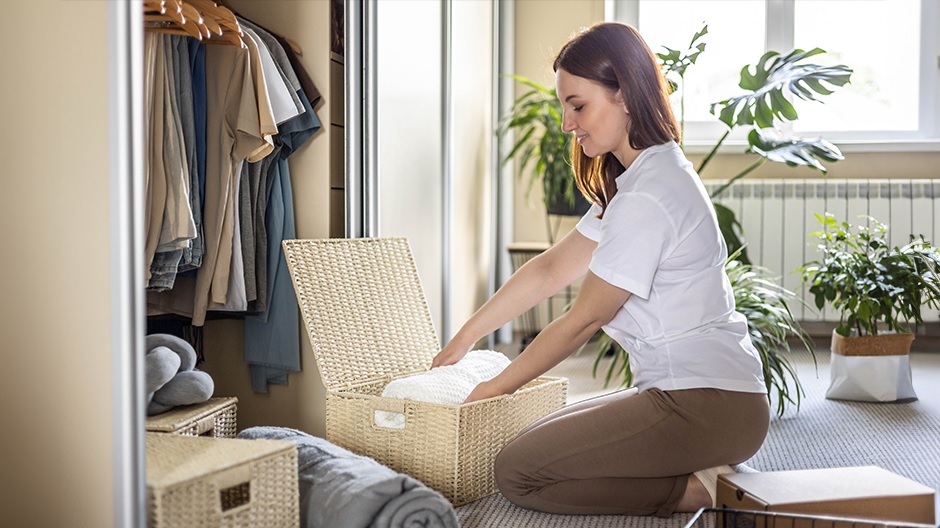In today’s fast-paced world, our homes often become the catch-all space for everything from everyday items to sentimental clutter that no longer serves a purpose. Over time, this accumulation of things can overwhelm us, making it harder to focus, relax, and truly enjoy our living space. In fact, a cluttered home can negatively impact both our mental and physical well-being. Yet, despite knowing the benefits of an organized environment, the task of decluttering can feel like an insurmountable challenge.
Thankfully, with a systematic approach—such as using a checklist—you can transform your home from chaos to calm, one step at a time. Decluttering isn’t just about tidying up; it’s about reclaiming control of your space, creating an environment that nurtures productivity and relaxation, and making your home feel like a true sanctuary.
In this guide, we’ll walk through how to effectively declutter your home with the help of a well-organized checklist, providing you with actionable steps that you can incorporate into your routine.
Why Decluttering Matters: The Psychological and Practical Benefits
Before diving into how to declutter, it’s important to understand the reasons why this process is so essential. A cluttered home isn’t just visually distracting; it can contribute to feelings of stress, anxiety, and even depression. In contrast, a clean, organized space has been shown to reduce stress levels, improve focus, and enhance feelings of accomplishment and satisfaction.
Additionally, decluttering can have practical benefits. An organized home allows you to easily find what you need, saving you time and energy. It also makes your space feel more welcoming and comfortable. Whether you’re hosting guests, working from home, or simply relaxing after a long day, a clutter-free environment provides a sense of peace and order.
Step 1: Create a Decluttering Checklist
A decluttering checklist is an essential tool in transforming your home into a space that is both organized and serene. The checklist not only gives you a clear, actionable plan, but it also helps break down what can often feel like an overwhelming task into manageable steps.
Start by identifying specific areas in your home that need attention. These could include individual rooms, storage spaces, or categories of items like clothing, books, or kitchenware. A comprehensive checklist will outline each area or item group, allowing you to tackle the task methodically. Here’s a general template to get you started:
Decluttering Checklist Template
Living Room:
-
Sort through books, magazines, and DVDs. Donate or recycle anything you no longer read or use.
-
Declutter coffee tables and side tables. Keep only essential or decorative items.
-
Tidy up shelves and entertainment centers. Consider digitalizing movies or music to free up space.
-
Organize cords and cables. Use cord organizers or clips to keep them tidy and out of sight.
Kitchen:
-
Clear countertops of any unused appliances or utensils.
-
Sort through pantry items. Dispose of expired food and donate anything you won’t use.
-
Tidy up kitchen drawers. Organize utensils, cutlery, and gadgets into sections.
-
Declutter your fridge. Regularly clean out old food to prevent buildup.
Bedroom:
-
Go through your wardrobe and donate or sell clothing you no longer wear.
-
Organize under-bed storage. Use bins or baskets to store off-season clothes or spare bedding.
-
Clear off nightstands and dressers. Keep only the essentials.
-
Sort through jewelry, accessories, and shoes.
Bathroom:
-
Go through toiletries. Discard expired or unused products, such as old makeup or half-empty bottles.
-
Organize bathroom drawers and cabinets. Consider storage containers for items like cotton swabs, toiletries, or cleaning products.
-
Tidy up towels and linens. Donate any extra towels or sheets that you no longer need.
Miscellaneous Areas (Hallways, Entryways, etc.):
-
Clear out any excess shoes, bags, or coats that clutter the space.
-
Organize your entryway for easy access to essentials like keys, mail, and shoes.
-
Tidy up any general storage areas, such as hall closets or basements, to ensure everything has its proper place.
By breaking down your home into specific categories, you can focus on one task at a time and track your progress. You may even want to color-code or prioritize the items on your checklist, starting with the most cluttered areas or the spaces that will have the biggest impact on your daily life.
Step 2: Start the Decluttering Process
Now that you’ve created your checklist, it’s time to roll up your sleeves and begin the decluttering process. It’s important to approach the task with patience and a mindset of simplicity. Here are some essential tips to help you as you declutter each area of your home:
1. One Area at a Time:
Focusing on one space at a time helps to maintain your momentum and ensures that you don’t feel overwhelmed. Whether you start with the bedroom or the kitchen, dedicate a specific time to decluttering that area before moving on to the next. As you work through each space, check off the items on your checklist to stay organized and track your progress.
2. The Three-Box Method:
As you go through each area, use the “three-box method.” For each item, place it into one of three categories:
-
Keep: Items that are functional or bring joy.
-
Donate: Items that are in good condition but no longer serve a purpose.
-
Discard: Items that are broken, expired, or no longer useful.
3. Be Honest with Yourself:
When decluttering, it’s easy to hold on to things out of sentimentality or fear of wasting money. Be honest with yourself about whether each item is truly adding value to your life. If it’s not, it’s time to let it go.
4. Organize as You Go:
Once you’ve sorted your items into the appropriate boxes, begin organizing the things you’ve decided to keep. This is the perfect opportunity to rethink how you store items—perhaps using storage bins, baskets, or even vertical shelving to make the most of your space.
5. Don’t Procrastinate:
Decluttering can feel daunting, but procrastination will only make it worse. Set a timer for 30 minutes to an hour, and commit to working through your checklist during that time. When you give yourself clear boundaries, it’s easier to stay focused and make tangible progress.
Step 3: Maintain a Clutter-Free Home
The key to long-term success in keeping your home organized is establishing habits that prevent clutter from accumulating again. Here are some strategies for maintaining your newly decluttered space:
1. Regular Cleanouts:
Once a month, spend a few minutes going through your space to ensure that nothing has started to accumulate. Perform small “maintenance” declutters to keep everything in its place and prevent the buildup of unnecessary items.
2. Establish Daily Habits:
Make tidying up a part of your daily routine. For example, after a meal, immediately wash dishes and wipe down countertops. At the end of the day, take a few minutes to clear away any clutter in living spaces or bedrooms.
3. One-In, One-Out Rule:
For every new item you bring into your home, make it a habit to remove one item. This rule helps ensure that your space doesn’t get overrun with things you don’t need.
4. Be Mindful of Purchases:
Before buying new items, ask yourself if they truly serve a purpose or bring value to your home. By being mindful of your purchases, you’ll prevent your home from becoming cluttered again in the future.
Conclusion
Decluttering your home can seem like a monumental task, but with the help of a checklist and a systematic approach, it can be done in a way that’s both manageable and rewarding. The process not only transforms your living space into a cleaner, more functional environment but also improves your mental clarity and well-being. By taking small steps, being intentional with what you keep, and maintaining a clutter-free home, you can enjoy a peaceful, organized living space that enhances every aspect of your life. The act of decluttering is more than just a physical clean-up; it’s a mental reset that can breathe new life into your home and ultimately, into your everyday experience.















